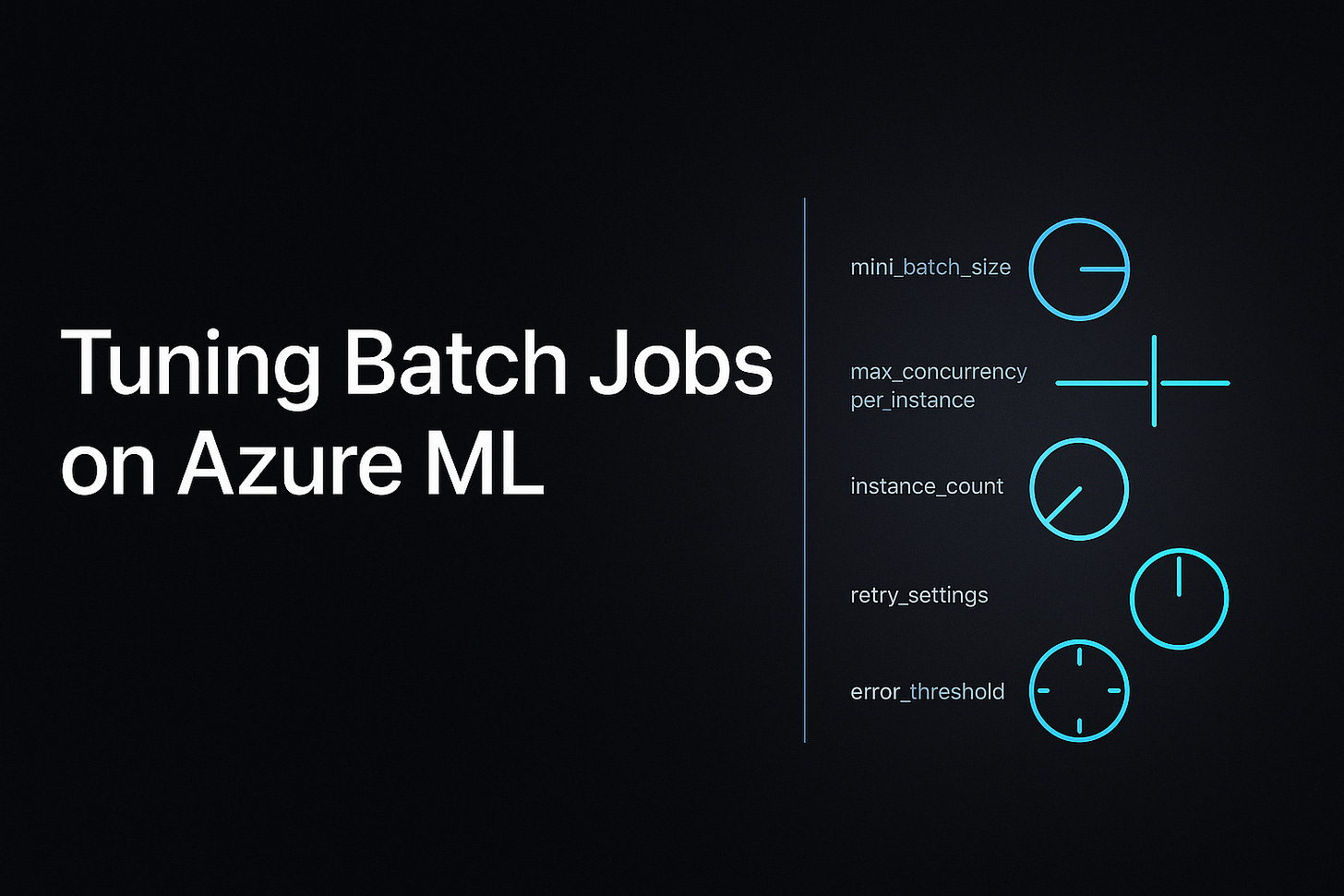Batch Scoring on Azure ML
5 Knobs That Save You from Nightly Headaches
Hi,
Today’s CloudPro is about the five batch-scoring knobs most engineers overlook. If you’ve ever watched a job stretch from minutes to hours and wondered why, this is where you start.
This article is adapted from Chapter 5 of Hands-On MLOps on Azure. In that chapter, author Banibrata De dives into the gritty details of model deployment: batch scoring, real-time services, and the YAML settings that make the difference between smooth pipelines and midnight firefights.
(The book goes much further, covering CI/CD pipelines, monitoring, governance, and even LLMOps across Azure, AWS, and GCP. CloudPro readers can grab it at the end of this piece with an exclusive discount.)
Cheers,
Shreyans Singh
Editor in Chief
Tuning Batch Jobs on Azure ML: 5 Knobs Every Engineer Should Know
It’s late. The batch run you trusted starts crawling. Dashboards spike, Slack pings light up, and you’re debating whether to kill the job or ride it out. You don’t need a re-platform. You need to tune the controls Azure ML already gives you.
Below are the five knobs that tame throughput, flakiness, and costs. They live in your batch deployment YAML, and they work.
1) mini_batch_size: The throttle for your workload
Batch jobs in Azure ML process data in chunks. mini_batch_size controls how big each chunk is. Push it too high, and you’ll hit memory or I/O bottlenecks; keep it too low, and you’ll waste time on overhead. Think of it like loading a truck: too few boxes and you’re underutilizing space, too many and you risk breaking the axle. Getting this balance right often cuts hours off long-running jobs.
2) max_concurrency_per_instance: How many cooks in the kitchen
Each compute node can process tasks in parallel, but how many at once depends on its resources. max_concurrency_per_instance is that dial. If you pack too much onto a single node, CPU and memory will thrash, and everything slows down. Start low, then gradually raise it while watching system metrics. The goal is steady throughput, not chaos.
3) instance_count: Scale out, don’t just scale up
Even with tuned concurrency, sometimes one node just isn’t enough. That’s where instance_count comes in. It decides how many nodes you’ll spread the workload across. It’s the knob you turn when you need predictable completion times. For example, making sure the nightly run finishes before business hours. More nodes mean more cost, but also fewer late-night surprises.
4) retry_settings: Resilience for the real world
In batch jobs, things fail: a network hiccup, a corrupted file, a transient storage timeout. Without retries, the whole job can collapse because of one small blip. retry_settings lets you say, “Try again a few times before giving up.” Set sensible timeouts and retries per mini-batch so small failures don’t derail the entire pipeline.
5) error_threshold: Fail smart, not early
What happens if some data records are bad? By default, too many errors can abort the run. With error_threshold, you control how many you’ll tolerate. Setting it to -1 tells Azure ML to ignore errors completely. For messy real-world datasets, this is a lifesaver: you can still ship 99% of results and deal with the outliers later, instead of losing the entire batch.
Extra sanity checks
Respect the contract: Batch jobs are built for files/blobs in, files/blobs out. Don’t try to wrap them around per-record HTTP calls.
Keep scripts separate: Use
batch_score.pyfor batch andonline_score.pyfor real-time. Different handlers, different expectations.Watch metrics that matter: Throughput, per-batch latency, error rate, and CPU/GPU/memory use. Wire alerts so you’re not caught off-guard at 2 a.m.
Takeaway
Batch scoring doesn’t have to be a black box. Azure ML gives you the levers. You just have to use them. Tune these five settings, keep batch and online flows separate, and you’ll get faster, more reliable runs without babysitting every night.
This walkthrough is pulled straight from Chapter 5 of Hands-On MLOps on Azure. The full book expands on everything here: deployments, monitoring, alerting, governance, pipelines, and operationalizing large language models responsibly.
For the next 48 hours, CloudPro readers get 35% off the ebook and 20% off print. If Azure ML is part of your stack, or about to be, this is the reference worth keeping open on your desk.



